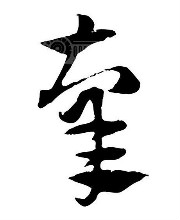| 图片: | |
|---|---|
| 名称: | |
| 描述: | |
- 特殊类型的肾脏肿瘤
| 姓 名: | ××× | 性别: | 男 | 年龄: | 52 |
| 标本名称: | |||||
| 简要病史: | 体检发现腹腔肿块,无血尿,尿潴留 | ||||
| 肉眼检查: | 术中发现与肾脏、胰腺粘连,大体切面灰白实性,有出血 | ||||
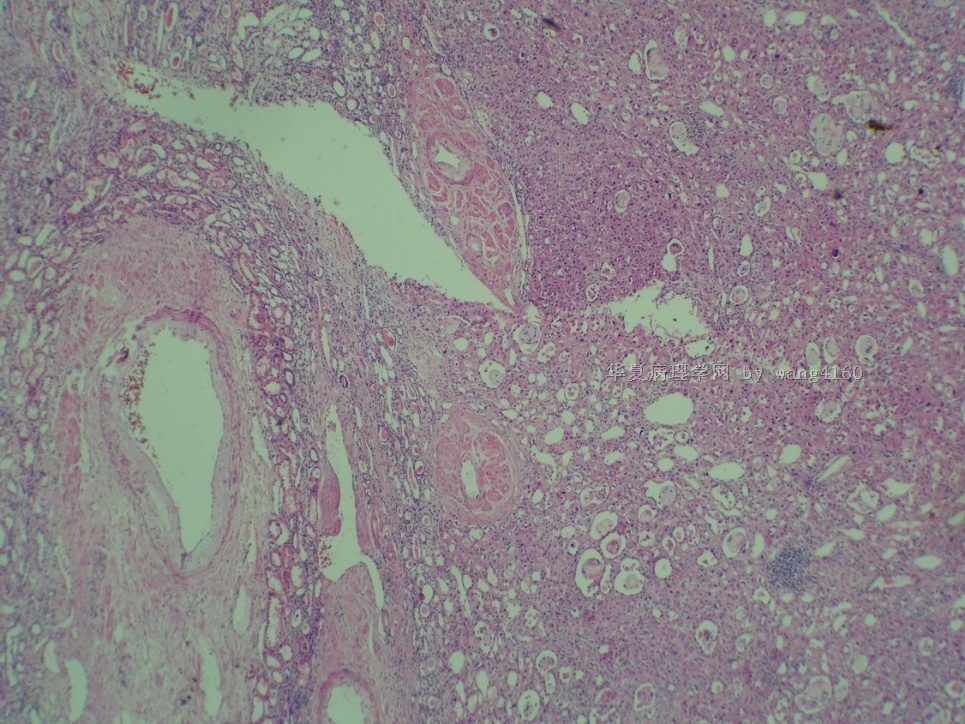
名称:图1
描述:图1
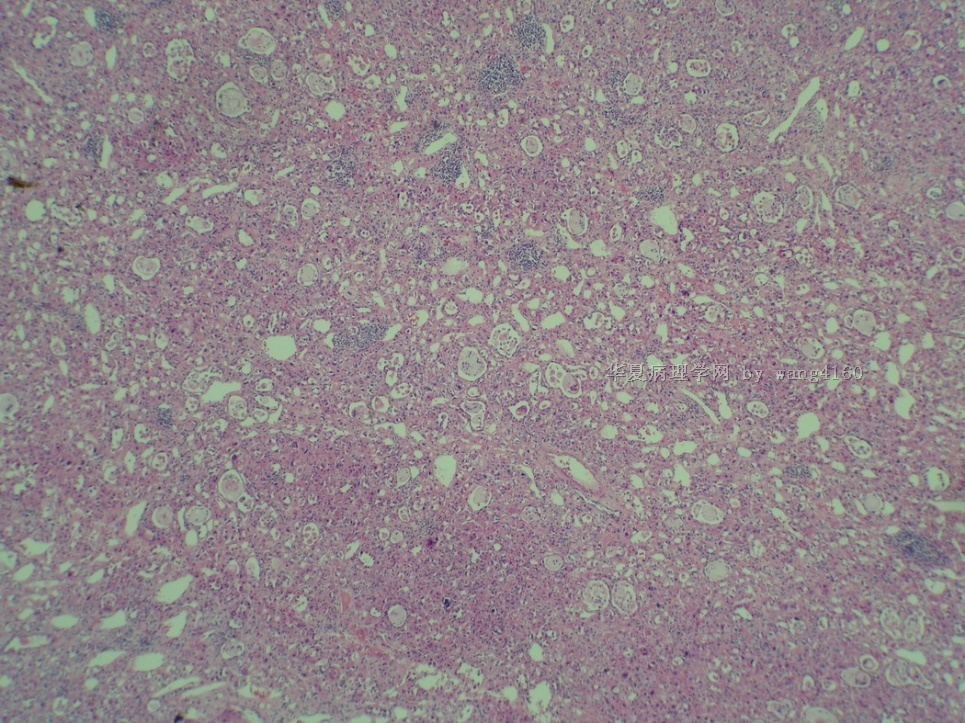
名称:图2
描述:图2

名称:图3
描述:图3

名称:图4
描述:图4
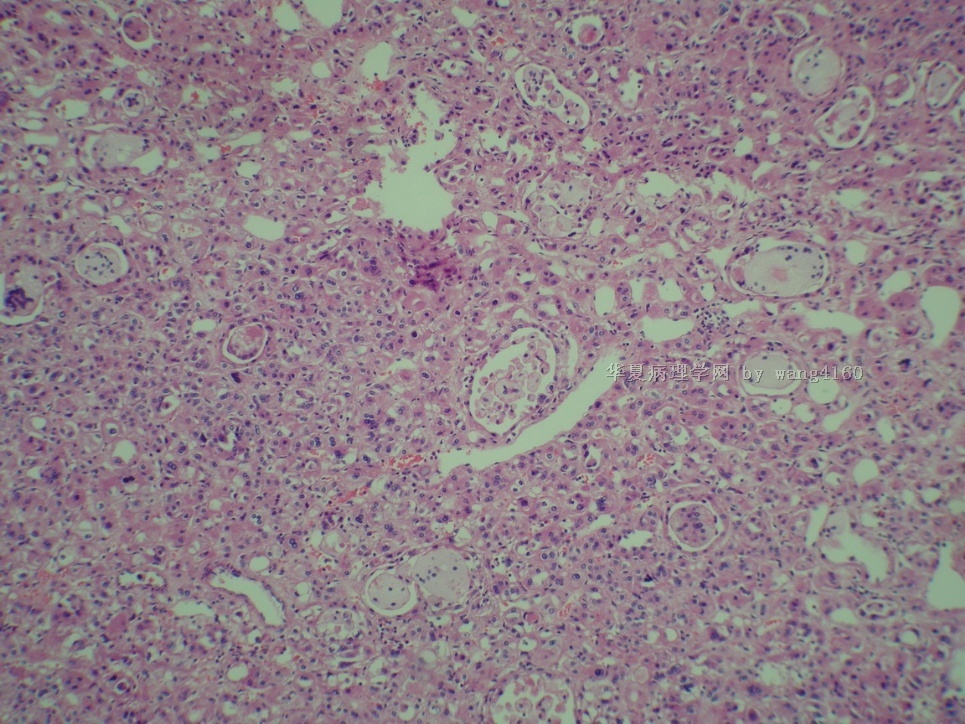
名称:图5
描述:图5

名称:图6
描述:图6
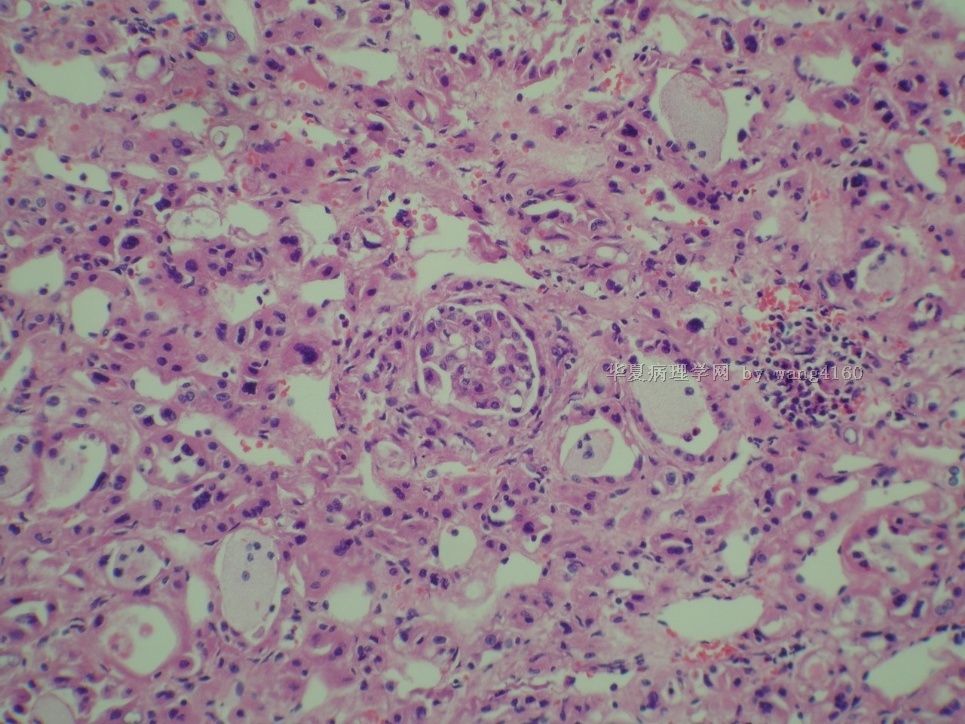
名称:图7
描述:图7
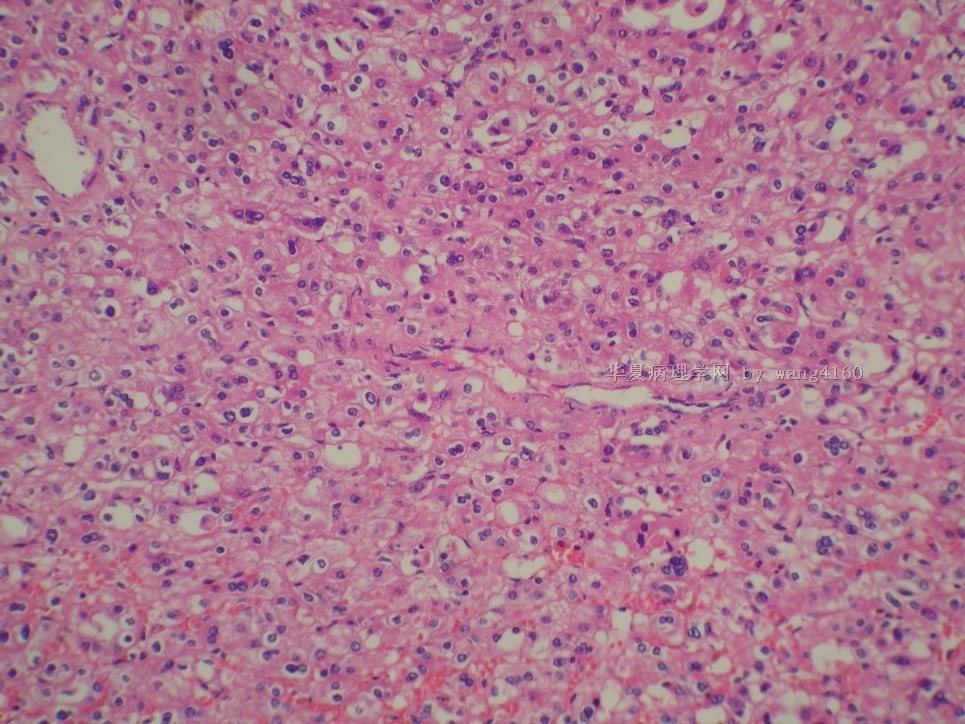
名称:图8
描述:图8
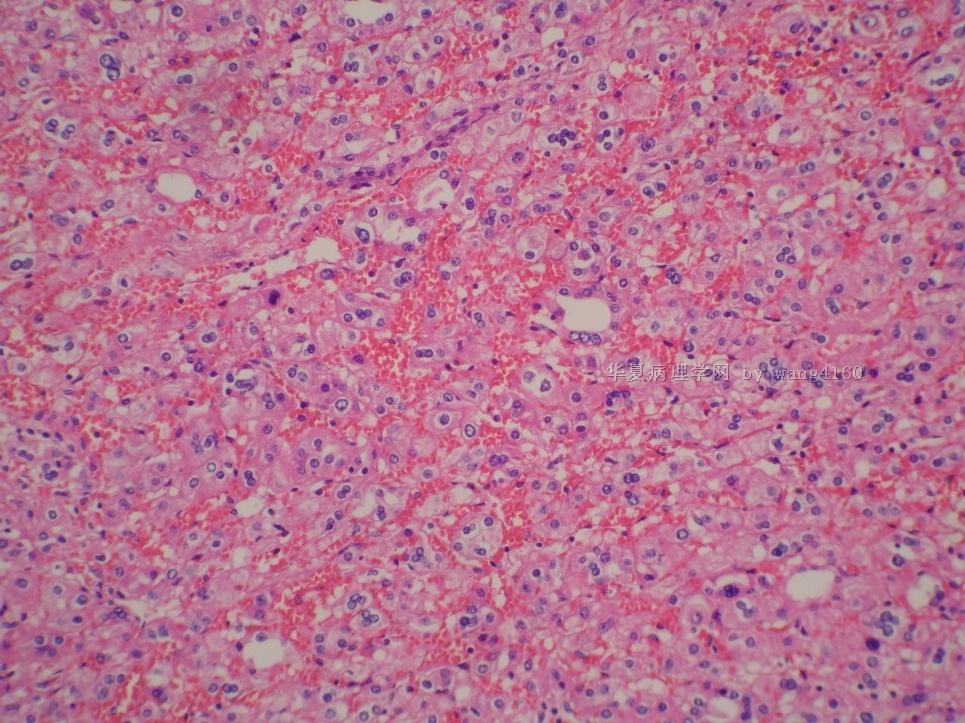
名称:图9
描述:图9

名称:图10
描述:图10

名称:图11
描述:图11

名称:图12
描述:图12
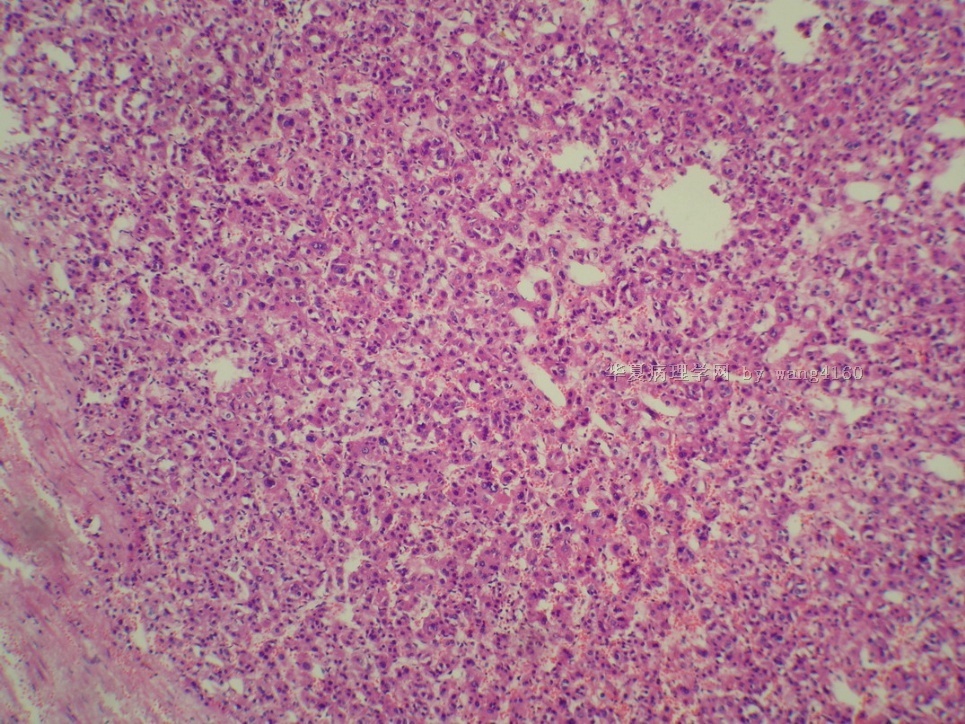
名称:图13
描述:图13
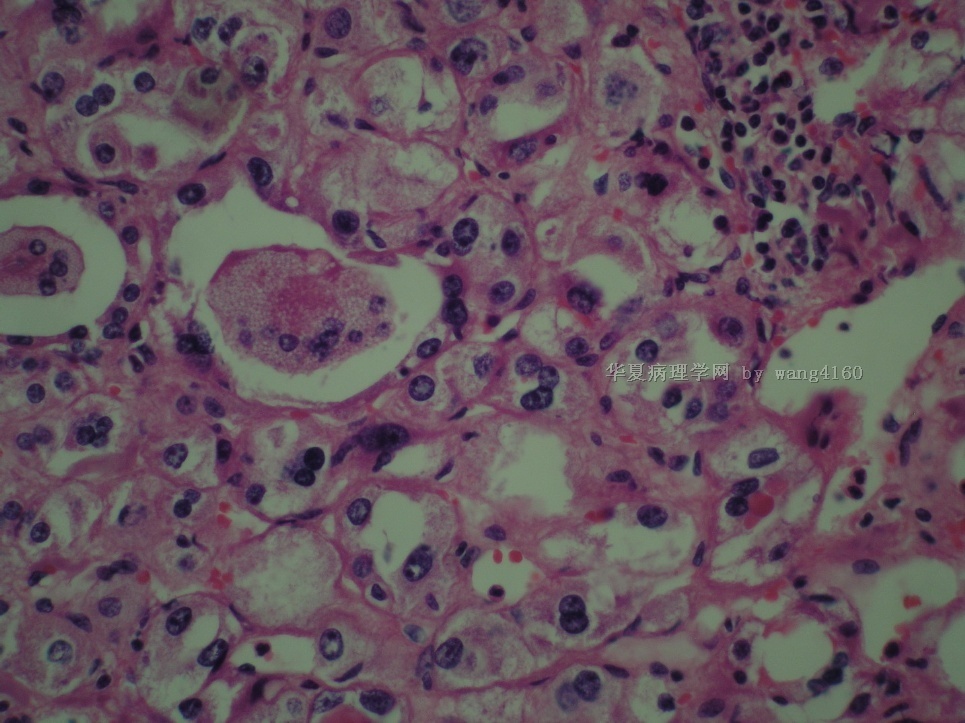
名称:图14
描述:图14
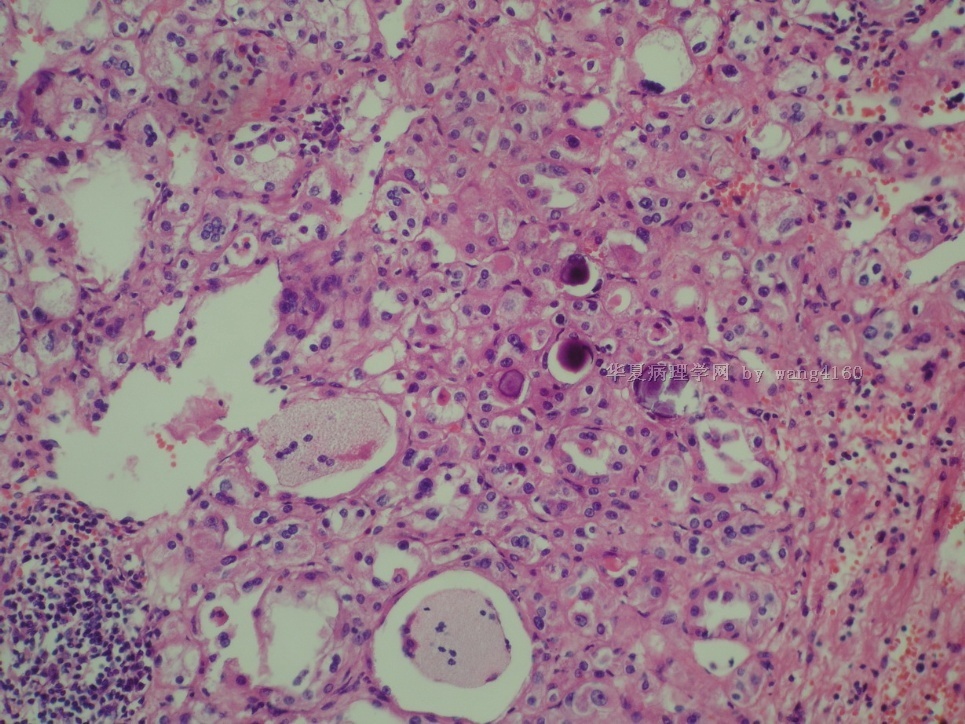
名称:图15
描述:图15
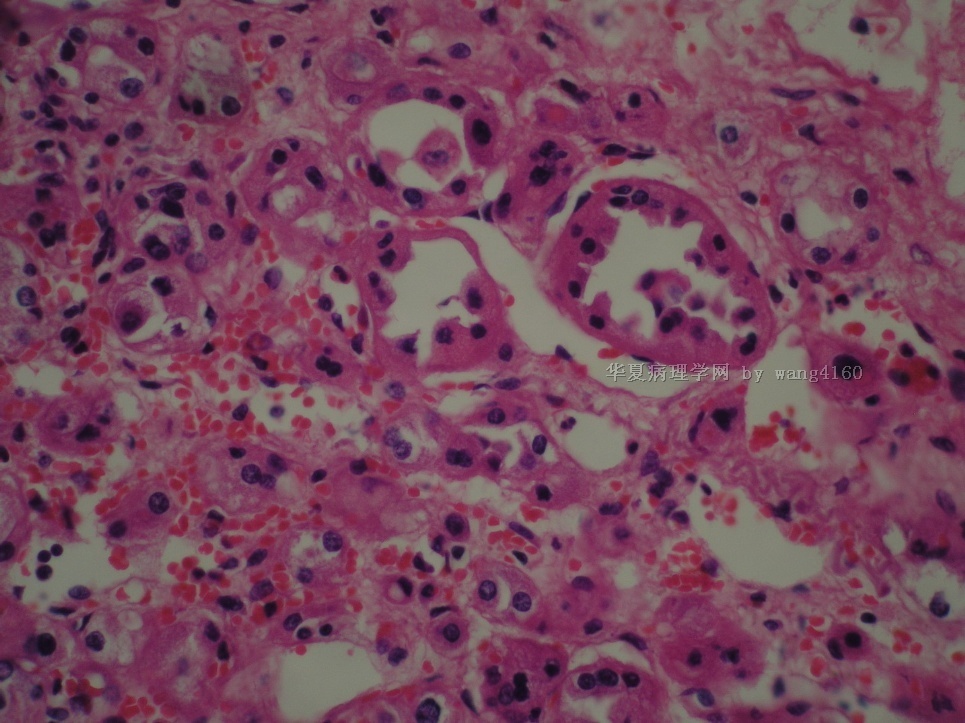
名称:图16
描述:图16
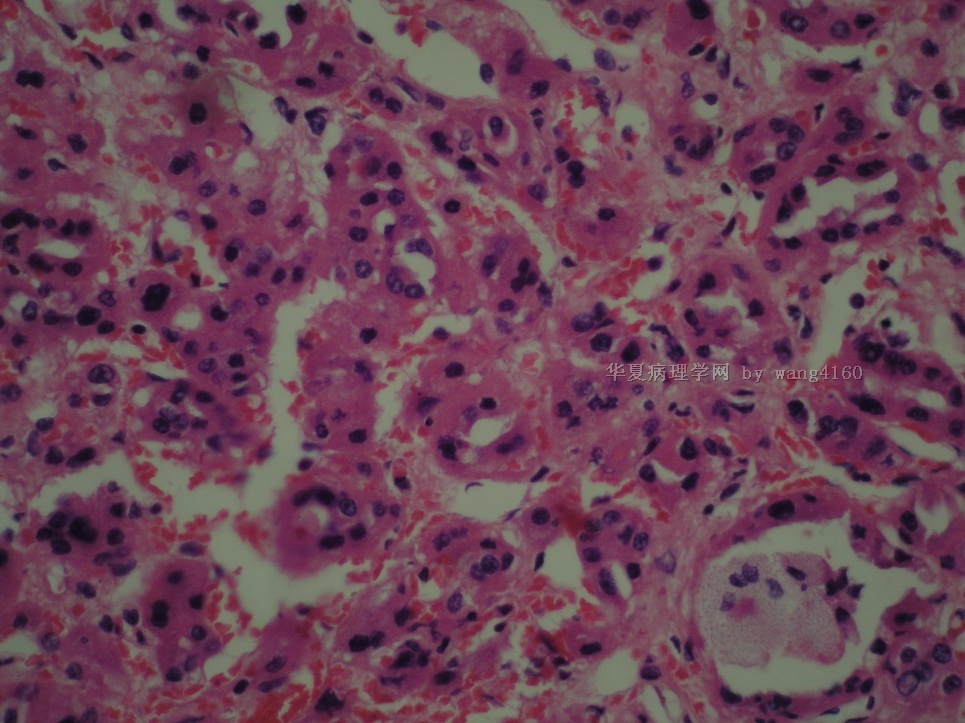
名称:图17
描述:图17
-
本帖最后由 于 2011-01-11 07:38:00 编辑
"我们是在相互学习,讨论时诊断有偏差并不要紧。难道我们不认为今天的错会为了明天的正确?讨论中的错不是为了实际诊断中的对?真诚希望网友们能广泛的发表意见。"谢谢金主任!
论坛里目的只有一个:共同学习、共同提高!各位网友请继续广开言路,踊跃参与。

- If you have great talents, industry will improve them; if you have but moderate abilities, industry will supply their deficiency. 如果你很有天赋,勤勉会使其更加完美;如果你能力一般,勤勉会补足其缺陷。
以下是引用xljin8在2011-1-16 21:36:00的发言:
病理讨论是交流和切磋病理诊断经验,对于那些非常少见病种和新的病理类型我们并没有诊断经验,也尚未能掌握诊断的真谛。 关键是我们要不断的学习,与时俱进,要拓宽知识面,不是说“只怕想不到,不怕做不到”吗?。 讨论诊断时要注重形态学依据、辅助诊断方法、鉴别诊断的要点。如能有参考文献更好。 我们是在相互学习,讨论时诊断有偏差并不要紧。难道我们不认为今天的错会为了明天的正确?讨论中的错不是为了实际诊断中的对?真诚希望网友们能广泛的发表意见。 谢谢! 赞同金主任语重心长的意见! |

- 王军臣
-
本帖最后由 于 2011-01-16 22:16:00 编辑
|
Amin MB, Gupta R, Ondrej H, McKenney JK, Michal M, Young AN, Paner GP, Junker K, Epstein JI.
Primary thyroid-like follicular carcinoma of the kidney: report of 6 cases of a histologically distinctive adult renal epithelial neoplasm.
Thyroidization of kidney reminiscent of thyroid follicles with accumulation of inspissated colloid-like material in renal tubules is a hallmark of chronic pyelonephritis. We identified 6 tumors in the kidney, distinct from currently known subtypes of renal cell carcinoma, with a striking histology that closely mimicked well-differentiated thyroid follicular neoplasms and raised the possibility of metastatic follicular thyroid carcinoma. Three occurred in males and 3 in females with an age range of 29 to 83 years and size range from 1.9 to 4 cm. All tumors were encapsulated and exclusively demonstrated follicular architecture comprising of microfollicles and macrofollicles containing inspissated colloid-like material. A minor component of small tightly packed follicles devoid of secretions was also noted. The follicles were lined by cells
with moderate amphophilic to eosinophilic cytoplasm with round nuclei and occasional prominent nucleoli. The tumors were nonimmunoreactive with thyroglobulin and thyroid transcription factor 1 and for markers contemporarily used for renal differentiation. The tumors had a gene expression profile distinct from clear cell and chromophobe renal cell carcinoma. Comparative genetic hybridization failed to reveal cytogenetic alterations. Mean follow-up of 47.3 months (range: 7 to 84 mo) showed that 5 patients had no evidence of disease and 1 developed a metastasis to the renal hilar lymph nodes in which the follicular architecture with colloid was retained. Thyroid-like follicular renal cell carcinoma represents a unique histologic subtype of renal cell carcinoma of low malignant potential and its primary importance is to distinguish it from metastatic carcinoma from the thyroid. 照片是原文中插图, 供参考。 |
病例讨论是交流和切磋病理诊断经验,对于那些非常少见病种和新的病理类型我并没有诊断经验,也尚未掌握诊断的真谛。 我想关键是我们要不断的学习,与时俱进,拓宽知识面,不是说“只怕想不到,不怕做不到”吗?。
讨论病理诊断时要注重形态依据、辅助诊断方法、鉴别诊断的要点和临床特征。能提供参考文献非常好。
讨论是在相互学习,诊断有偏差并不要紧,难道我们不认为今天的错会为了明天的正确?讨论中的错不是为了实际诊断中的对?
真诚希望网友们能广泛的发表意见。
谢谢!
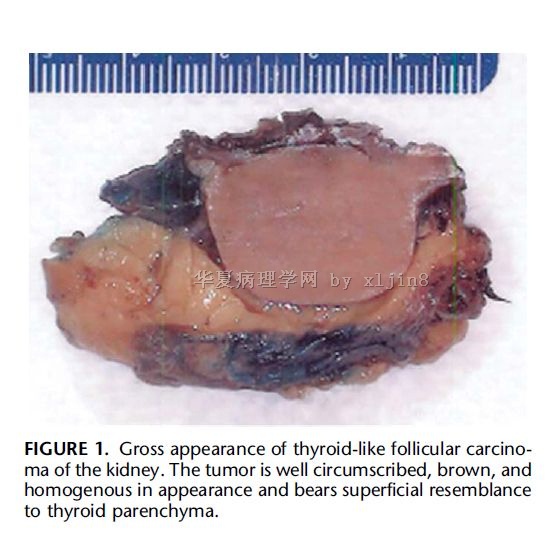
名称:图1
描述:图1
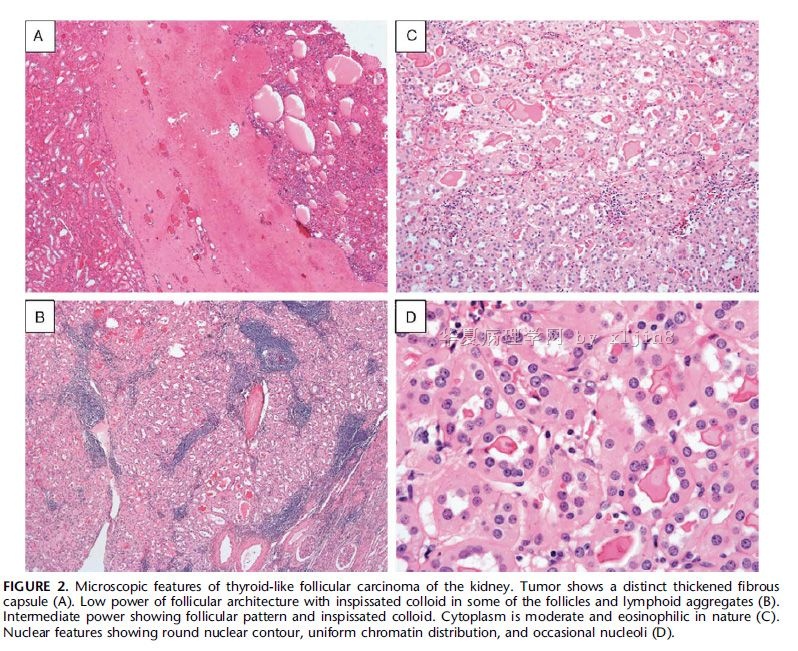
名称:图2
描述:图2
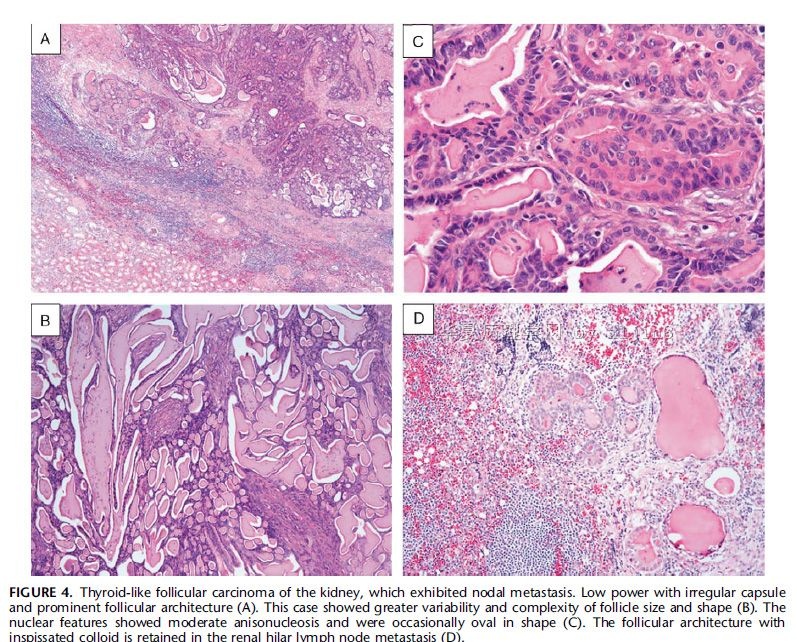
名称:图3
描述:图3
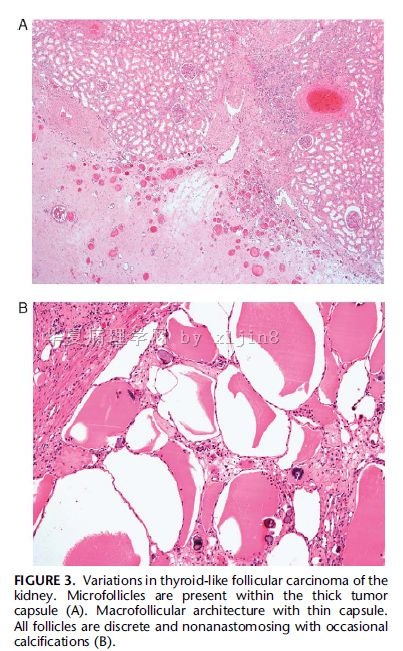
名称:图4
描述:图4

- xljin8
文献2有关6例甲状腺滤泡样肾癌的形态描述:
All tumors were encapsulated and exclusively demonstrated follicular architecture comprising of microfollicles and macrofollicles containing inspissated colloid-like material. A minor component of small tightly packed follicles devoid of secretions was also noted. The follicles were lined by cells with moderate amphophilic to eosinophilic cytoplasm with round nuclei and occasional prominent nucleoli.

- xljin8
| 以下是引用Liu_Aijun在2011-1-12 21:09:00的发言:
肿瘤由实片区域和管状结构相间构成。实片区域与肾细胞癌、嫌色细胞癌(注意核周空晕特征)相似,管状结构像分化很好的肾小管,与肾集合管癌又有几分相似。所以这是一个混合型的或未分类的肾细胞癌。“甲状腺滤泡癌样肾癌”是有严格界定的。本例图片中管状结构只是肿瘤成分之一,而且管状结构与“甲状腺滤泡结构”并不相似。所以不敢轻易诊断“Thyroid-like follicular carcinoma of the kidney”。 |
肿瘤由实片区域和管状结构相间构成。实片区域与肾细胞癌、嫌色细胞癌(注意核周空晕特征)相似,管状结构像分化很好的肾小管,与肾集合管癌又有几分相似。所以这是一个混合型的或未分类的肾细胞癌。“甲状腺滤泡癌样肾癌”是有严格界定的。本例图片中管状结构只是肿瘤成分之一,而且管状结构与“甲状腺滤泡结构”并不相似。所以不敢轻易诊断“Thyroid-like follicular carcinoma of the kidney”。

- If you have great talents, industry will improve them; if you have but moderate abilities, industry will supply their deficiency. 如果你很有天赋,勤勉会使其更加完美;如果你能力一般,勤勉会补足其缺陷。
-
本帖最后由 于 2011-01-12 15:08:00 编辑
请见目前发表的英文相关参考文献:
Results: 5

- 王军臣


